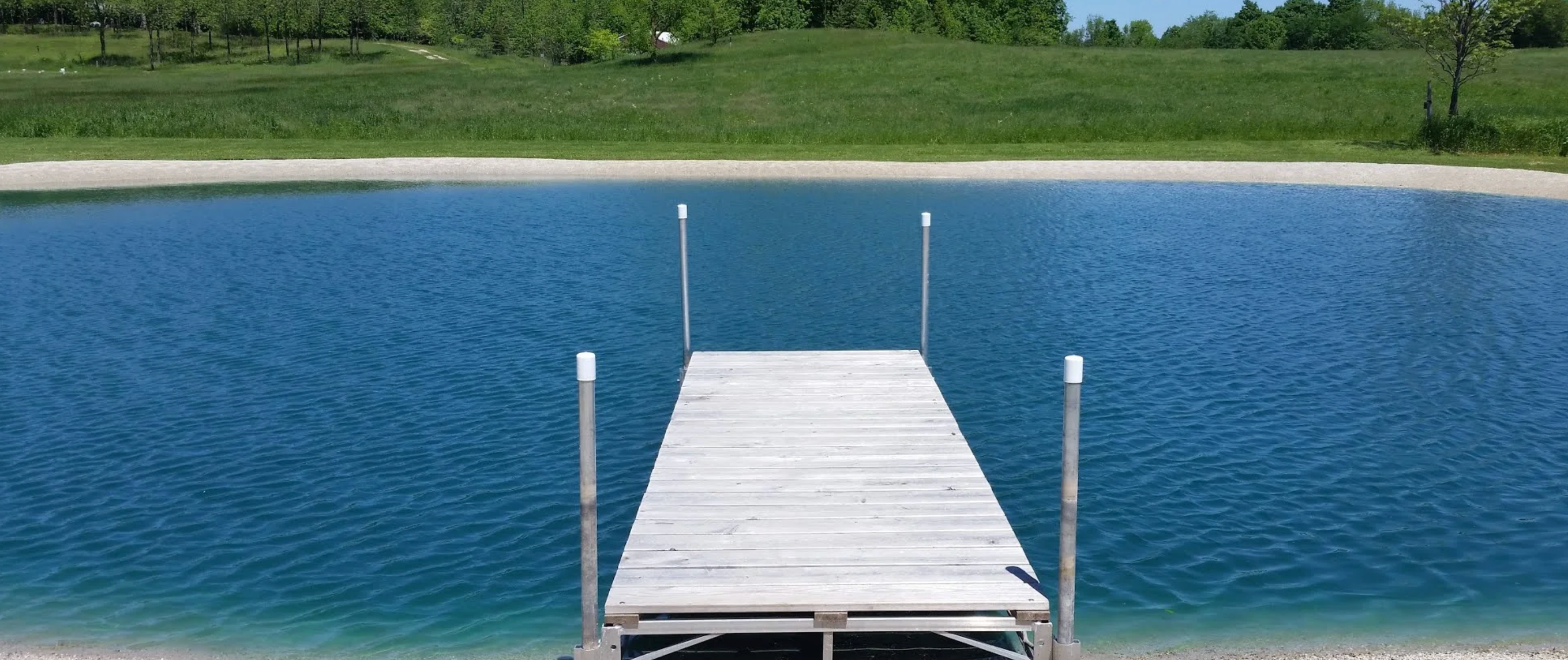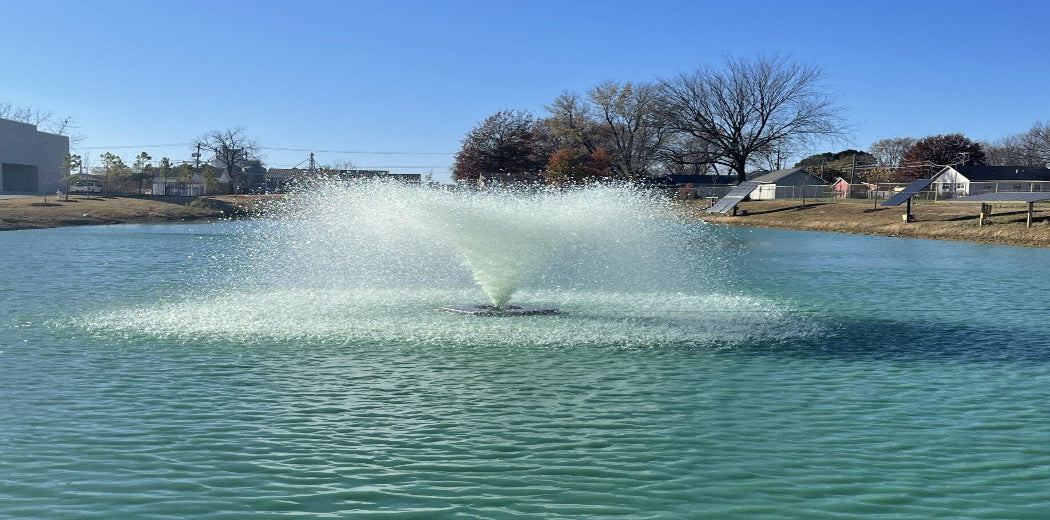Chara

Because of its size and complex structure sometimes Chara is mistaken for a vascular aquatic plant or higher plant; however, Chara actually is a multi-cellular macro-alga.
This submerged plant-like green alga grows attached to the bottoms of ponds, lakes and slow-moving rivers and ditches. Chara prefers hard, calcium-rich waters. Chara is also known as Muskgrass, due to its strong garlicky odor. This macro-algae has no true leaves, only branches made of single column-shaped cells that often are surrounded by spine-shaped cells. These spiny cells and lime deposits that collect on them make the plant somewhat rigid and or brittle to the touch.
Chara can be undesirable in ponds and lakes because it can grow along the bottom of a water body, almost as a carpet, and crowd out other aquatic plant species that may be beneficial to the ecosystem.
Prevention
Excessive growth of Chara is caused by a surplus of nutrients in the water from nearby pastures, crop fields, septic systems, lawns and golf courses, to name a few. To prevent its overabundance, it is necessary to reduce fertilizer application near the pond, maintain septic systems properly, redirect nutrient-rich water runoff away for the water body and maintain a vegetative buffer strip around your pond.
Physical/Mechanical Control
Chara can be controlled through physical removal such as pulling, raking and cutting, but this control will be short-lived. Chara will recolonize through spores and fragments left behind after removal has been performed. Mechanical control is practical when used in conjunction with chemical control methods, or as a maintenance practice around swimming or fishing areas. Chara removed from the water body should be gathered up and removed from the site to ensure that nutrients contained in the vegetation do not re-enter the water body they were just removed from.
Biological Control
Beneficial Bacteria Products such as Bio-Buster® or Bio-Clear® and Enzymes such as PZ-900® feed on nutrients in the water making them unavailable for algae growth. Reducing nutrients can help prevent colonization of nuisance Algae, but will not kill or reduce existing Chara/Algae growth.
Chemical Control
Various aquatic algaecides/herbicides are effective in controlling Chara. The active ingredients that have been most successful in treating Chara include copper-based products such as CutrinePlus Granular, or multi-functioning aquatic products such as Clipper SC, Hydrothol 191.
Copper Sulfate Crystals are also a common algae treatment because of its availability, effectiveness and cost. However, in very hard water, copper will bind with the calcium and precipitate out of solution rendering it ineffective as an effective algaecide against Chara. Before using copper is it best to test the pond water’s alkalinity and adjust copper treatments to alkalinity concentrations. Copper products may be toxic to some fish, mainly Trout, Koi or Goldfish in high enough doses. Be sure to check the product label of any product before use.
CutrinePlus Liquid and Granular are chelated copper base herbicides that are highly effective on Chara and are safe and easy to use. Cutrine Plus liquid or granular do not have water use restrictions. CutrinePlus is toxic to trout, koi fish and goldfish.
Clipper SC offers fast and selective control of hard to kill submerged pond weeds, Chara, and Filamentous algae. Clipper SC was nominated as leader in its class for unrivaled control of of aquatic weeds and algae. Clipper SC dissipates quickly from the water and does not accumulate in the sediment.
Hydrothol 191 is a contact herbicide. Contact herbicides act quickly and kill all plant cells that are targeted. Hydrothol can be toxic to fish.
Alternative Control Methods
Pond Dyes and colorants can reduce the amount of aquatic plant growth by limiting sunlight penetration and reducing photosynthesis.
Chara or other Macro Algae can sometimes be managed with a pump that circulates the shallow water depths where Chara commonly grows.





